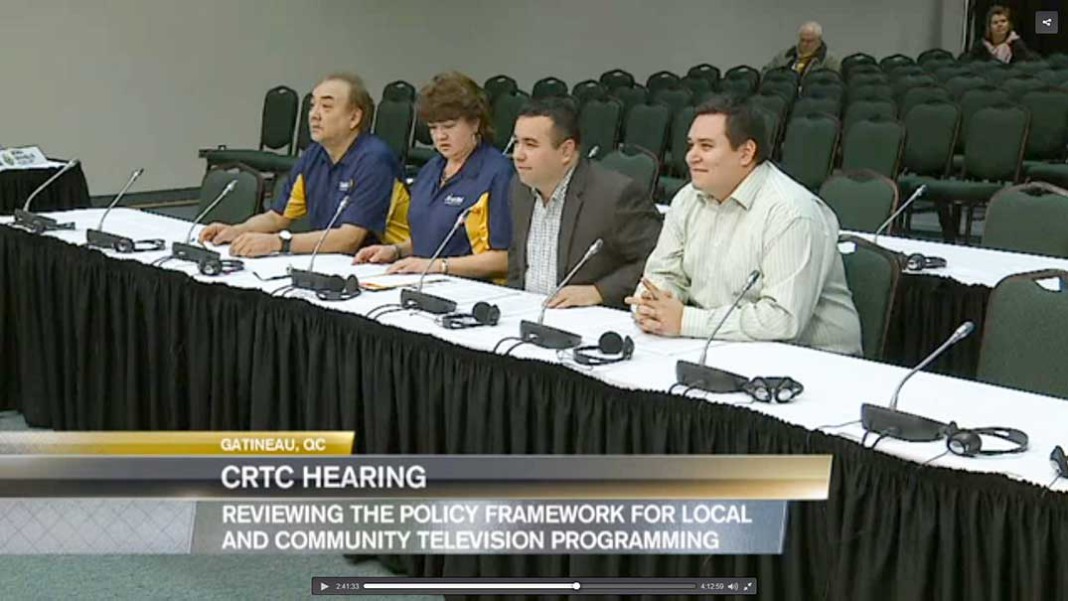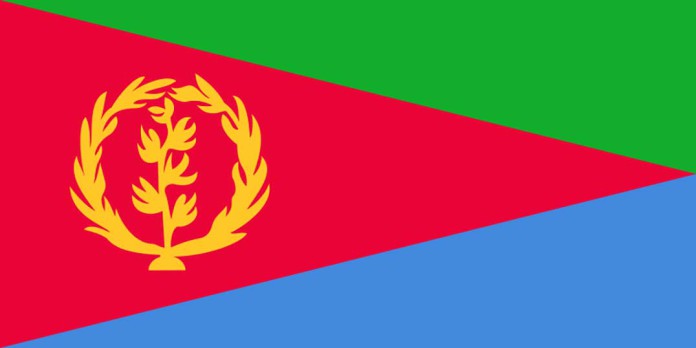GATINEAU—A four-person delegation from Wikwemikong travelled south recently to make a presentation on behalf of their community television channel FirstTeltv5, more familiar to many by its former name WikyTV5.
The delegation, headed up by Wikwemikong Councillor Lawrence Enosse, included Lyndsay Brisard, board director for the Wiikwemkoong Development Commission (WDC) operating as Enaadmaagehjik, Anne Marie Sandford, communication business manager for FirstTel, and FirstTeltv5 videographer producer Gordon Odjig, brought their community’s perspective on the unique role that community television plays.
“I think the presentation went very, very well,” said Councillor Enosse. “It was very informative. The commission were very happy to hear from us.”
Wikwemikong was one of two First Nations communities that presented to the commission, the other being Wawatay (serving First Nations people and communities of Nishnawbe Aski Nation).
Councillor Enosse noted that the delegate members that joined him in the presentation are “very passionate.” A trait that the organization has been fortunate to possess throughout its existence.
But the station has always operated under very tight fiscal restraints. “We have managed to continue operations through contributions from the band and WDC, along with our own resources,” he pointed out. “Our revenue runs from about $35,000 to $50,000 a year.” Looking back over the proceeding years, the further back one studies, the amount the station has existed on “is less and less.”
Despite those constraints, “we have been in operation for the past 26 years, a resilient, passionate, committed, community-driven and proud 26 years,” Councillor Enosse told the CRTC.
The committee went on to give a brief history of how WikyTV5 was established, pointing out that an agreement was made with a cable business that, over the years, has changed names and ownership. “That agreement was to build a cable system on Wiikwemkoong Unceded Territory in exchange providing that Wiikwemkoong was given a community channel for local programming,” relayed Councillor Enosse, who noted that his community has a population of 8,000-plus band members with an on-reserve population of about 3,000 people. “In our community half, or about 500 households, have the ability to be connected within the cabled village core. The other half live outside the reach of the cable system in seven surrounding communities.”
WikyTV5 has faced unique challenges over the year, pointed out Councillor Enosse. “Due to our household subscribership, Eastlink, the BDU (broadcasting distribution undertaking), has never been under a regulatory obligation to support our small cable community channel financially, furthermore, nor have they ever offered to. I am proud to say that our resilient small cable community channel survives on its own source revenue between $35,000 and $50,000 with an overall operating budget of $100,000 annually. This revenue is mainly raised via our weekly television bingo which is supported by our people.”
Councillor Enosse pointed out that the channel provides “programming on the community channel, 24 hours a day, 7 days a week. We are proud to announce and share with you, Mr. Chairman and commissioners, that 40 percent of our grassroots televised community programming is produced in our language Ojibway/Odawa so that it can be documented and shared with future generations.”
“Our unique, innovative and creative in-the-language grassroots programming includes elder interviews, children and youth within our education systems at our local day care, elementary and high school; puppet shows for our children and youth to promote language learning artisans teaching activities from wood carving, to quill work. Retaining the language is very important to the community and work has been further developed to include Wiikwemkoong’s own Anishinabemowin language app on google Playstore and on Apple itunes,” he said. “With increased funding we could increase this percentage to 60 percent. We subtitle for non-language speakers to maximize its accessibility, but this introduces extra costs.”
“Furthermore,” he continued, “our community programming features promotion and awareness in education, social issues, news, recreation and leisure, tradition and culture, health, entertainment, community activities and tourism. When moving video is not available, we offer a community scroll that provides information on events, and activities for the community.”
Mr. Brisard went on to point out that “in the region of Manitoulin Island and the North Shore, an area with 18 First Nation communities, FirstTelTV5 is a leader in aboriginal broadcasting. To provide an increased visibility and awareness of our channel, our culture and our language, we have recently begun live-streaming. This past summer actually, FirstTelTV5 was able to generate over 9,000 hits on our live-stream coverage of our local annual three-day powwow, attracting viewers from across North America, Europe, Australia and the Middle East.”
So successful have the community channel operators become that “other First Nations within Ontario are beginning to look at the FirstTelTV5 model to help promote aboriginal culture within their own communities. As a community channel limited geographically in the distribution of our locally created grassroots content, it is difficult to solicit advertising to increase our revenues. The advertising revenue that we are able to generate from local community small business and organizations is minimal.”
“If FirstTelTv5 had increased financial support we could increase First Nation employment and raise the standard of our community news programming,” continued Mr. Brisard. “We could access more training for our staff and in turn provide more time for our staff to train local volunteers. With increased financial support we could update our equipment. The equipment we see here today in this room is production equipment that we could only dream of having access to, let alone owning. To demonstrate our need for new equipment, I will let you know that we still manually playback our video content on VHS tape during live broadcast. It would be a huge step forward for us if we could modernize so that we are digital, a little more automated, and high definition.”
Among the positive developments that have been taking place is the potential for reaching out to the community members of the reserve who are not able to access the cable system. “With the help of CACTUS, FirstTelTv5 was able to receive a used CBC transmitter which we would like to use to reach households that are outside the reach of Eastlink cable network we currently are limited to, as well as reach other households of Manitoulin Island.”
“When CACTUS visited the Island in 2013 it was determined that other communities, First Nations and non-First Nations alike, would like access to a community channel to view local history, news and events and culture,” said Mr. Brisard. “The transmitter would also allow residents who cannot afford an Eastlink cable subscription to view our programming. We just need the funding to make this transmitter operational.”
The delegates pointed out that although the cable provider and other BDUs pull in as much as $1,000,000 a year, revenue which leaves the community, because the community falls below the 2,000-person threshold, they are not required to provide any funding to the community channel.
“We are grateful for the infrastructure that was built there 26 years ago,” acknowledged Ms. Sanford, “but they have contributed nothing but the occasional cable service call to our community since. This is a service that could potentially be provided by trained First Nations community members, increasing employment for the Wiikwemkoong Unceded Territory.”
The televised First Nation programming provided by FirstTeltv5 “is unique to Wiikwemkoong as it is solely First Nation-controlled,” she went on to point out. “The Wiikwemkoong subscribers are dependent on this channel for continued livelihood and information. Therefore, we support CACTUS’ (Canadian Association of Community Television Users and Stations) proposal that all BDUs contribute two percent of their revenues to a community-access media fund, regardless of system size or type.”
“We would also like our community channel to be on Bell Satellite,” continued Ms. Sanford, “so that participation in our channel is not divided by service provider. We do envision our community channel to be an independent community channel featuring news of Manitoulin Island and to include the First Nation diversity.”
Ms. Sanford went on to say that “our attendance here is a stepping stone and a learning experience. We realize that the First Nation perspective has been lacking in the broadcasting and telecommunications industry. We are seeking to learn from the experience and expertise of the CRTC in ensuring that we can continue to provide quality programming for our Community.”
In addition to the presentation to the CRTC, the delegates found the opportunity to interact with other community organizations very informative. “There were some other delegations that sat in on our presentation,” said Ms. Sanford. “It was very interesting to learn about the kinds of things they were doing and they were very interested in what we are doing as well.”
The CRTC has been soliciting information from the public on the future of community television and the comments can be made and read online at: consultation.crtc.gc.ca/en/consultation/36/community-television.




